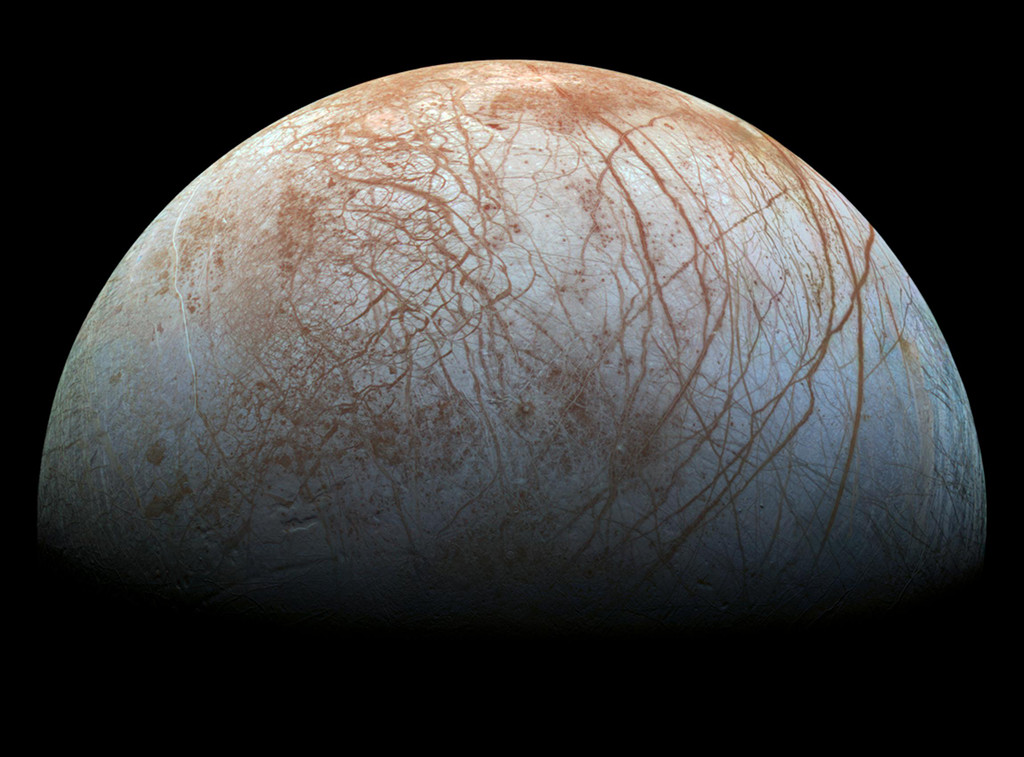伽利略的歐洲
Galileo's Europa

發表日期:2024-03-29
20 世紀 90 年代末,伽利略號太空飛行器環繞木衛二系統,記錄下了木衛二的迷人景色,並發現了木衛二冰冷的表面很可能隱藏著深邃的全球海洋的證據。伽利略號的歐羅巴影像資料在這裡進行了重製,經過改進的校準生成了近似於人眼所見的彩色影像。木衛二長長的彎曲裂縫暗示著地表下的液態水。 這顆大衛星在環繞木星的橢圓軌道上經歷的潮汐撓曲為保持海洋液態提供了能量。但更誘人的是,即使在沒有陽光的情況下,這一過程也有可能提供支援生命的能量,使木衛二成為尋找地球以外生命的最佳地點之一。目前在木衛二軌道上的朱諾號宇宙飛船也多次飛越這個水世界,傳回了探索木衛二宜居性的影像和資料。今年 10 月,美國國家航空航天局將發射 "歐羅巴號快船",開始探索之旅。該太空飛行器將飛越近 50 次,接近木衛二冰面 25 公里以內。
原文:Looping through the Jovian system in the late 1990s, the Galileo spacecraft recorded stunning views of Europa and uncovered evidence that the moon's icy surface likely hides a deep, global ocean. Galileo's Europa image data has been remastered here, with improved calibrations to produce a color image approximating what the human eye might see. Europa's long curving fractures hint at the subsurface liquid water. The tidal flexing the large moon experiences in its elliptical orbit around Jupiter supplies the energy to keep the ocean liquid. But more tantalizing is the possibility that even in the absence of sunlight that process could also supply the energy to support life, making Europa one of the best places to look for life beyond Earth. The Juno spacecraft currently in Jovian orbit has also made repeated flybys of the water world, returning images along with data exploring Europa's habitability. This October will see the launch of the NASA's Europa Clipper on a voyage of exploration. The spacecraft will make nearly 50 flybys, approaching to within 25 kilometers of Europa's icy surface.
※ 本文由萌芽機器人自動轉貼自每日一天文圖(Astronomy Picture of the Day,APOD),原文為英文,正體中文是透過 DeepL 翻譯及 OpenCC 進行自動處理,內容僅供參考,若有任何錯誤之處還請見諒!
關於每日一天文圖:每日一天文圖網站是美國國家航空暨太空總署與密西根理工大學提供的服務,網站每天提供一張影像或圖片,並由天文學家撰寫扼要說明其特別之處。